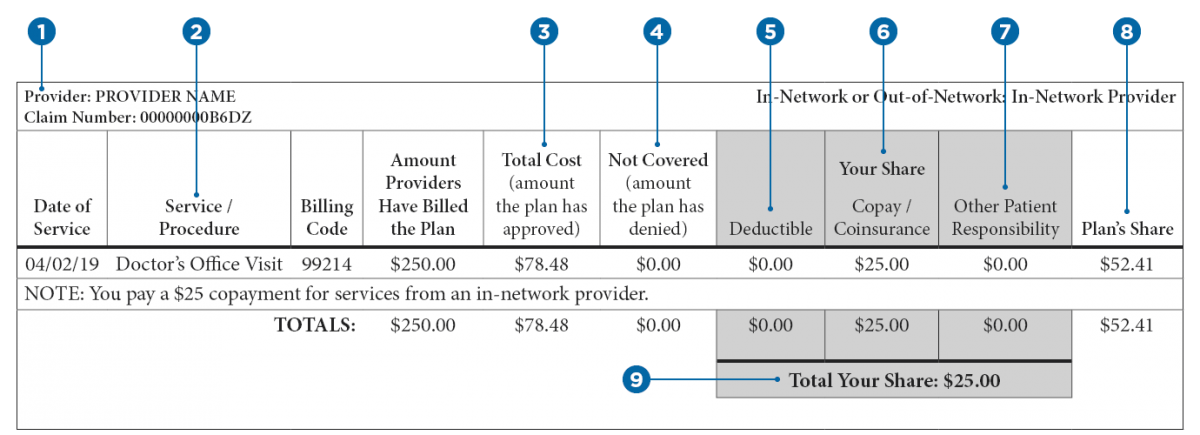How to Use Your Explanation of Benefits (EOB)

Your EOB shows you the costs for any medical services you received from the previous month, but it’s not a bill. You don’t need to send any payments or take any action. It helps you track your medical costs and shows you how expenses are divided between your doctor, your health plan, and your copay.
Your EOB makes it easy to keep track of costs:
- Total amount billed
The first page of your EOB shows your monthly and annual totals for bills sent by your doctor and other health care providers. - Yearly limit
The amount you have paid to date for health care services and the amount remaining before you meet your annual limit. - Claim detail
The main section of your EOB provides details for each claim, including the provider who performed the service, the date of the service, the procedure, and the costs. For details on how to read this section, see below.

- Provider—The name of the doctor or specialist who provided the service.
- Service / Procedure—A description of the type of service you received.
- Total Cost—The amount we will pay for the service. It may be less than the amount the provider charged.
- Not Covered—The amount of the service we don’t cover. Generally, this only occurs if the service is denied.
- Deductible—If your plan has a deductible for this service, you would need to pay this amount before we pay our share.
- Copay/Coinsurance—The amount you pay for services or supplies.
- Other Patient Responsibility—Any other costs for this service that you need to pay. Generally, this only occurs if the service is denied.
- Plan’s Share—This is the amount we will pay for the service.
- Total Your Share—This is the total amount you pay for this service. Remember, the EOB is not a bill. You may have already paid the amount shown.
Register online and have your EOBs sent directly to your account!